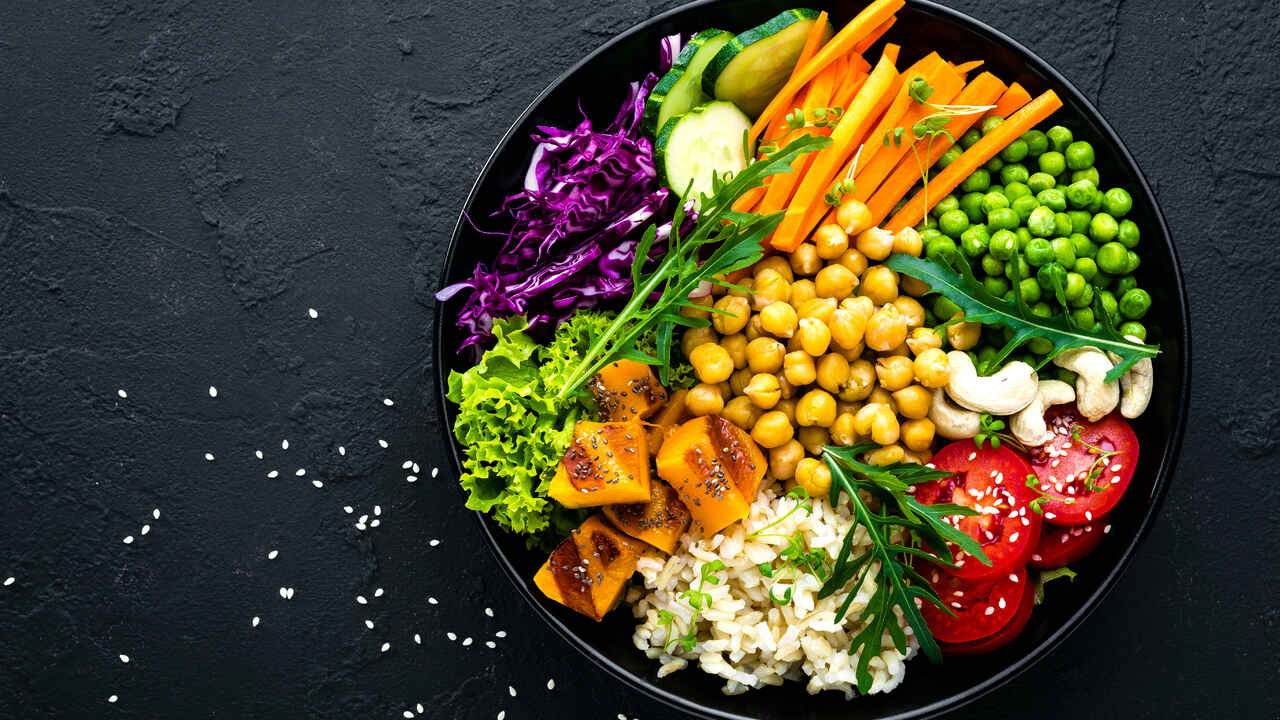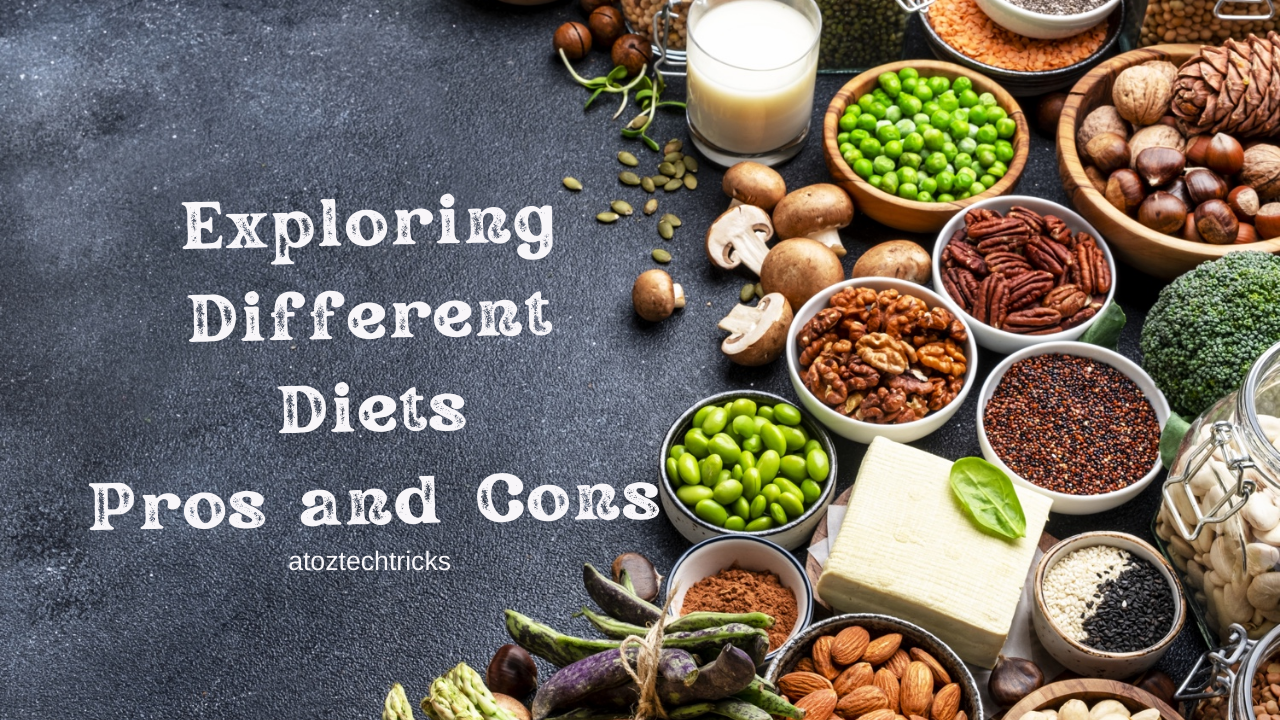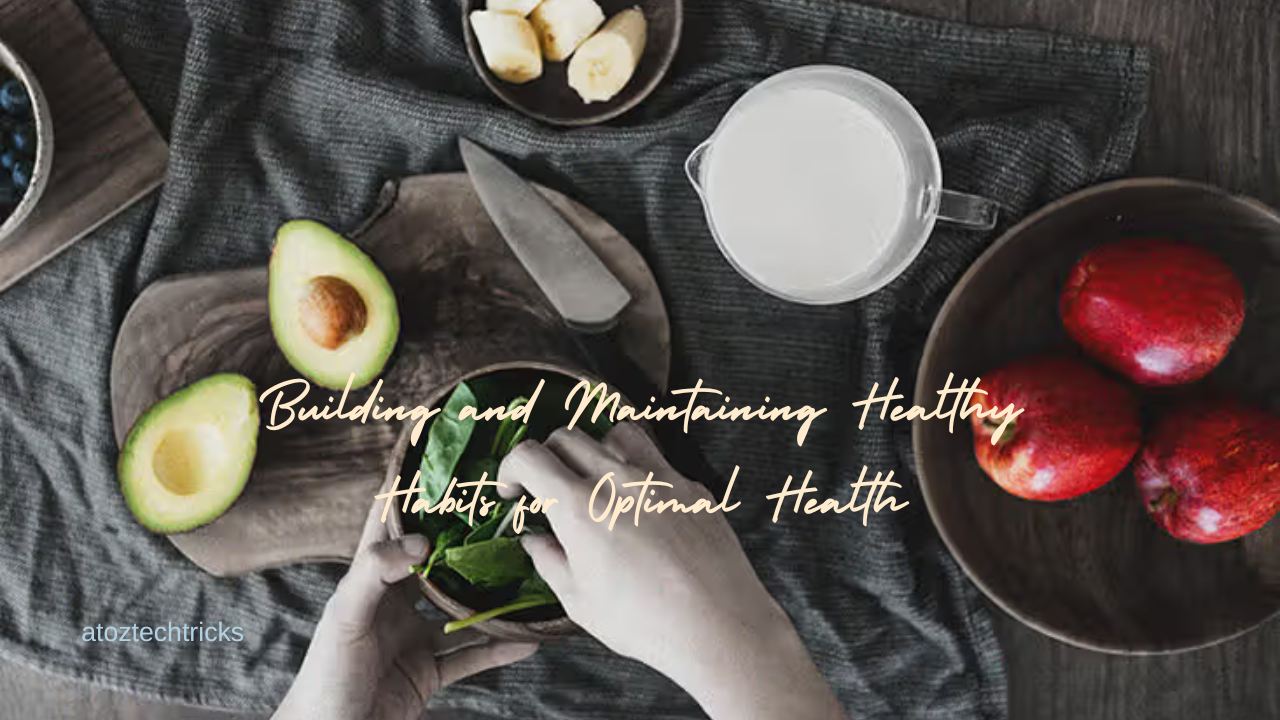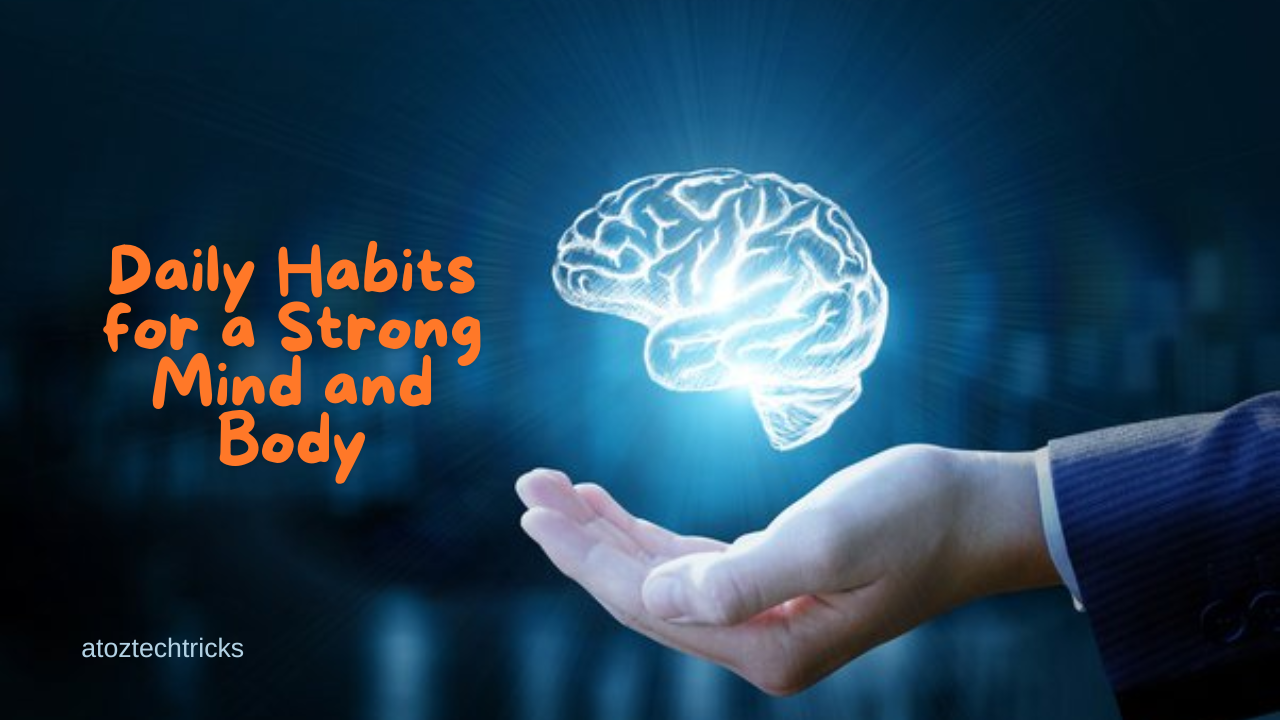Exploring Different Diets: Pros and Cons
In today’s health-conscious world, various diets promise everything from quick weight loss to improved well-being. With so many options available, choosing the right diet can be overwhelming. This comprehensive guide will explore some popular diets, outlining their pros and cons to help you make an informed decision.
1. The Ketogenic Diet
Overview: The ketogenic (keto) diet is a high-fat, moderate-protein, and low-carbohydrate diet. The goal is to enter a state of ketosis, where the body burns fat for fuel instead of carbohydrates.
Pros:
- Effective Weight Loss: Many people experience rapid weight loss on keto due to the body’s reliance on fat for energy.
- Appetite Control: High-fat foods can increase satiety, helping to control hunger.
- Improved Blood Sugar Control: The diet may help lower blood sugar levels, benefiting individuals with type 2 diabetes.
Cons:
- Nutrient Deficiencies: Restricting carbohydrates can limit the intake of essential nutrients found in fruits, vegetables, and whole grains.
- Keto Flu: Some people experience symptoms like fatigue, headache, and nausea during the initial adaptation period.
- Long-Term Sustainability: Maintaining ketosis can be challenging, and some may struggle to adhere to the diet long-term.
Healthy Eating on a Budget: Tips and Strategies for a Nutritious Diet
2. The Mediterranean Diet
Overview: The Mediterranean diet emphasizes whole grains, fruits, vegetables, nuts, seeds, and healthy fats, particularly olive oil. It includes moderate amounts of fish and poultry and limits red meat and processed foods.
Pros:
- Heart Health: This diet is linked to a reduced risk of cardiovascular disease due to its emphasis on healthy fats and omega-3 fatty acids.
- Balanced Nutrition: It offers a wide variety of nutrients from different food groups, supporting overall health.
- Sustainability: The diet is less restrictive and easier to follow long-term compared to more extreme diets.
Cons:
- Cost: High-quality ingredients like fresh fish, nuts, and olive oil can be expensive.
- Potential Weight Gain: Without portion control, the calorie-dense foods included can contribute to weight gain.
- Individual Variation: The effectiveness of the diet may vary based on individual metabolic responses and activity levels.

3. The Paleo Diet
Overview: The paleo diet, also known as the caveman diet, focuses on eating whole, unprocessed foods similar to what was available to our pre-agricultural ancestors. It includes lean meats, fish, fruits, vegetables, nuts, and seeds while avoiding dairy, grains, legumes, and processed foods.
Pros:
- Whole Foods Focus: The diet emphasizes unprocessed, nutrient-dense foods.
- Reduced Processed Foods: Eliminates many artificial additives and preservatives.
- Improved Digestion: Some people experience better digestive health by avoiding grains and legumes.
Cons:
- Nutrient Imbalance: Excluding entire food groups, such as dairy and grains, can lead to deficiencies in calcium, fibre, and other nutrients.
- Expense: High-quality meats and organic produce can be costly.
- Lack of Variety: Some may find the restricted food choices limiting and difficult to maintain.
4. The Vegan Diet
Overview: The vegan diet excludes all animal products, including meat, dairy, eggs, and honey. It focuses on plant-based foods such as fruits, vegetables, grains, nuts, seeds, and legumes.
Pros:
- Ethical and Environmental Benefits: Reduces animal suffering and environmental impact associated with animal farming.
- Health Benefits: May lower the risk of heart disease, high blood pressure, and certain cancers when well-planned.
- Weight Management: Many people experience weight loss and better body composition on a vegan diet.
Cons:
- Nutrient Deficiencies: Potential lack of vitamin B12, iron, calcium, and omega-3 fatty acids, requiring careful planning or supplementation.
- Social and Practical Challenges: Finding vegan options can be difficult in certain social settings or locations.
- High Carbohydrate Intake: Some people may consume too many refined carbs and processed vegan foods, which can negate health benefits.
5. The Atkins Diet
Overview: The Atkins diet is a low-carbohydrate diet that focuses on reducing carbs to induce ketosis, similar to the keto diet but with more structured phases. It starts with very low carbs and gradually increases them in later phases.
Pros:
- Weight Loss: Effective for quick weight loss, especially in the initial phases.
- Appetite Control: Reducing carbs can help control hunger and cravings.
- Flexible Phases: Allows for gradual reintroduction of carbs in later phases.
Cons:
- Initial Restriction: The early phase is very restrictive and may be challenging to maintain.
- Nutrient Imbalance: Limited intake of fruits, vegetables, and whole grains can lead to deficiencies.
- Long-Term Effects: The long-term health effects of high protein and fat intake are still debated.

6. The DASH Diet
Overview: The Dietary Approaches to Stop Hypertension (DASH) diet focuses on reducing sodium intake and increasing the consumption of fruits, vegetables, whole grains, and lean proteins to lower blood pressure.
Pros:
- Heart Health: Proven to lower blood pressure and reduce the risk of cardiovascular disease.
- Nutrient-Rich: Encourages a balanced intake of vitamins and minerals.
- Sustainable: Less restrictive and more flexible compared to extreme diets.
Cons:
- Requires Commitment: Reducing sodium and maintaining a balanced diet can require significant effort and planning.
- Weight Loss: While beneficial for health, the diet is not specifically designed for weight loss.
- Individual Variability: May not be as effective for those with specific dietary needs or preferences.
7. The Zone Diet
Overview: The Zone Diet is based on a specific ratio of macronutrients: 40% carbohydrates, 30% protein, and 30% fat. It aims to balance hormones and control hunger.
Pros:
- Balanced Macronutrients: Provides a balanced intake of carbs, proteins, and fats.
- Appetite Control: This can help manage hunger and reduce cravings.
- Potential for Weight Loss: This may be effective for weight management and improved body composition.
Cons:
- Complexity: The strict macronutrient ratios can be challenging to maintain.
- Limited Evidence: The long-term benefits and sustainability of the diet are not well-established.
- Food Tracking: Requires careful tracking of food intake to adhere to the ratio.
Understanding Macros and Micros: Importance for Optimal Health
8. Intermittent Fasting
Overview: Intermittent fasting (IF) involves cycling between periods of eating and fasting. Common methods include the 16/8 method (16 hours fasting, 8 hours eating) and the 5:2 method (eating normally for 5 days, restricting calories for 2 days).
Pros:
- Weight Loss: Effective for weight loss and fat loss by creating a caloric deficit.
- Metabolic Benefits: May improve insulin sensitivity and metabolic health.
- Flexibility: Various fasting methods allow for flexibility in eating patterns.
Cons:
- Hunger and Irritability: Fasting periods can lead to hunger and mood changes.
- Not for Everyone: May not be suitable for individuals with certain health conditions or those who require regular meals.
- Potential for Overeating: The eating periods can lead to overeating if not managed properly.
9. The Flexitarian Diet
Overview: The flexitarian diet is primarily plant-based but allows for occasional meat and animal products. It focuses on reducing meat consumption while increasing plant-based foods.
Pros:
- Flexibility: Allows for occasional meat consumption, making it easier to follow.
- Health Benefits: Provides many of the benefits of a vegetarian diet, such as improved heart health and weight management.
- Environmental Impact: Reduces meat consumption, which can lower environmental impact.
Cons:
- Varied Results: The health benefits may vary based on the amount and quality of meat consumed.
- Not Strict: The lack of strict guidelines can lead to inconsistent adherence.
- Potential for Nutrient Gaps: May still require careful planning to ensure a balanced intake of nutrients.

10. The South Beach Diet
Overview: The South Beach Diet is a low-carb diet that emphasizes lean proteins, healthy fats, and low-glycemic carbohydrates. It has three phases, starting with very low carbs and gradually increasing them.
Pros:
- Balanced Approach: Focuses on healthy fats and lean proteins while allowing for gradual reintroduction of carbs.
- Weight Loss: This can lead to significant weight loss, especially in the initial phase.
- Improved Heart Health: Emphasizes healthy fats and low-glycemic carbs, which can benefit cardiovascular health.
Cons:
- Initial Restriction: The first phase is very restrictive and may be challenging.
- Nutrient Limitations: Reducing carbs can limit the intake of fruits and whole grains.
- Long-Term Adherence: Maintaining the diet long-term may be difficult for some individuals.
Choosing the right diet depends on individual health goals, lifestyle, and preferences. Each diet offers unique benefits and potential drawbacks. It’s essential to consider these factors and consult with a healthcare professional before making significant dietary changes. Whether aiming for weight loss, improved health, or sustainable eating habits, understanding the pros and cons of different diets can help you make a more informed and effective choice for your well-being.




Post Comment